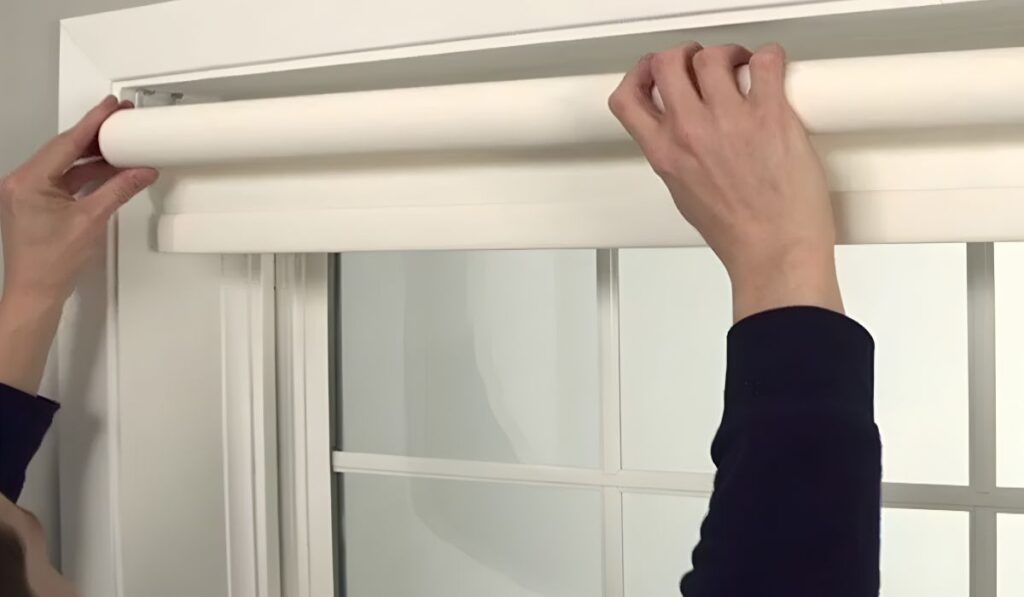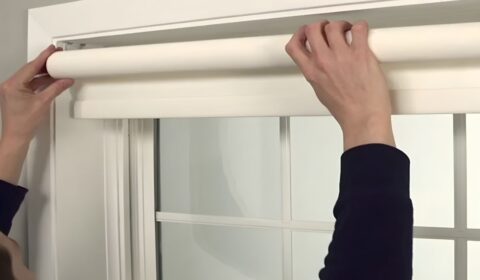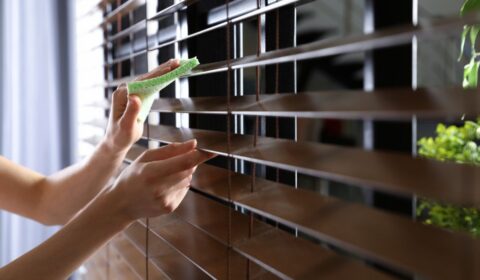To fit roller blinds to a uPVC door without drilling:
First, measure the glass area accurately. Clean the surface to remove dust and grease. Use no-drill solutions such as Perfect Fit blinds, adhesive brackets, or tension-fit blinds.
For Perfect Fit blinds:
Clip the brackets into the window beading and attach the blind frame. For adhesive options, firmly attach the brackets in place and allow them to set before hanging the blind. Finally, test the blind to ensure smooth movement and check that it doesn’t block the door handle.
Fitting roller blinds to a uPVC door without drilling is a practical and stylish way to add privacy, control light, and improve the look of your home. Many homeowners are concerned about damaging their doors or voiding their warranty by drilling holes into the frame. Fortunately, there are modern no-drill solutions that make installation quick, easy, and entirely safe for your uPVC doors.
Whether you live in a rented property, have recently installed new doors, or want a clean and hassle-free finish, no-drill roller blinds are the perfect choice. In this guide, we’ll explain how to fit roller blinds step-by-step and cover everything you need to know, from choosing the right blind to maintaining it for long-lasting performance.
Why Fit Roller Blinds Without Drilling?
uPVC doors are sleek and durable, but drilling into them can cause permanent damage. Here are some key reasons why no-drill blinds are a better option:
- No Damage to Your Door: Avoid unsightly holes and keep the door looking as good as new.
- Protect Your Warranty: Most manufacturers will void the warranty if the frame is drilled.
- Ideal for Renters: Many landlords do not allow alterations to doors and windows.
- Easy Installation and Removal: Ideal for a quick DIY project that doesn’t require tools.
- Clean and Modern Finish: No visible screws or fittings for a sleek appearance.
Step-by-Step Guide: Fitting Roller Blinds Without Drilling
The easiest way to fit roller blinds to a uPVC door without drilling is to use specially designed systems such as Perfect Fit blinds, adhesive brackets, or tension-fit blinds. Below is a straightforward, step-by-step process to achieve a professional finish.
Must Read: How to Fit Vertical Blinds?
Step 1: Measure Your Door Accurately
Getting the correct measurements is the most essential part of the process. If your blind doesn’t fit properly, it won’t sit neatly or work correctly.
- Measure the Glass Width: Measure the visible glass area, including the beading if you are using a Perfect Fit blind.
- Measure the Height: Measure from the top edge of the glass down to the bottom edge.
- Double-Check Measurements: Write down the numbers and check them twice before ordering your blinds.
Tip: Always measure in millimetres for accuracy.
Step 2: Choose the Right Type of No-Drill Blind
There are a few different fitting options available, depending on your needs:
Perfect Fit Roller Blinds – These come with a frame that clips into the window beading and sits flush against the door.
- Secure and neat.
- Ideal for blackout or thermal blinds.
- Easy to remove for cleaning.
Adhesive Brackets – These stick directly to the door using strong adhesive pads.
- Quick and tool-free installation.
- Best for lightweight blinds.
- Leaves minimal residue when removed.
Tension Fit Blinds – These use pressure to stay in place without screws or adhesives.
- Fully adjustable.
- Great for temporary or rented spaces.
Step 3: Clean the Door Surface
Before you attach any fittings, clean the uPVC surface.
- Use a mild detergent or surface cleaner to remove dirt and grease.
- Dry thoroughly with a clean cloth.
A clean surface helps adhesives or clips stick firmly and last longer.
Step 4: Attach the Brackets or Frame
For Perfect Fit Blinds:
- Slide the brackets between the glass and the beading.
- Press until they click into place securely.
- Attach the blind’s frame to the brackets.
For Adhesive Brackets:
- Peel off the protective film.
- Press the bracket firmly onto the frame for at least 30 seconds.
- Leave it to set before attaching the blind.
For Tension Fit Blinds:
- Adjust the brackets so they sit tightly against the frame.
- Secure by tightening according to the instructions.
Step 5: Fit the Roller Blind
Once your brackets or frame are in place:
- Slot the roller blind into position.
- Make sure it rolls smoothly up and down.
- Adjust the tension if necessary to ensure even operation.
Step 6: Test and Adjust
- Pull the blind all the way down and then back up to check for smooth movement.
- Ensure the blind does not interfere with the door handle or lock.
- If needed, make minor adjustments to keep everything aligned.
Benefits of Roller Blinds for uPVC Doors
Roller blinds are one of the most popular choices for uPVC doors for several reasons:
- Space-Saving: Unlike curtains, they sit neatly against the glass, providing a clean, unobstructed view.
- Variety of Fabrics: Choose from blackout, sheer, or thermal fabrics.
- Privacy and Light Control: Adjust easily to block sunlight or add privacy.
- Energy Efficiency: Thermal fabrics help keep rooms warm in winter and cool in summer.
- Easy to Clean: Most roller blinds need a quick wipe with a damp cloth.
Must Read: How to Clean Wooden Blinds?
Extra Tips for a Perfect Finish
- Match Your Home Decor: Choose colours and fabrics that complement your interior style.
- Consider Blackout Blinds: Ideal for bedrooms or doors leading to gardens.
- Check Door Movement: Ensure the blind doesn’t stop the door from opening fully.
- Safety First: If you have children, use a blind with a cordless or safety mechanism.
- Regular Maintenance: Dust the blind weekly to keep it looking fresh.
Common Mistakes to Avoid
- Poor Measuring: Always measure carefully – even minor errors can cause problems.
- Using Weak Adhesive: Choose high-quality adhesive brackets designed for blinds.
- Skipping the Cleaning Step: Dust or grease can cause brackets to come loose.
- Blocking the Door Handle: Make sure the blind is positioned correctly to avoid obstruction.
Final Thoughts
Fitting roller blinds to a uPVC door without drilling is simple, effective, and entirely safe for your door frame. By choosing the correct type of no-drill blind and following the steps carefully, you can achieve a stylish, practical solution for privacy and light control.
Whether you go for Perfect Fit blinds, adhesive fittings, or tension-fit designs, you’ll enjoy all the benefits of roller blinds while keeping your uPVC door in perfect condition – no holes, no damage, and no stress.
Frequently Asked Questions
Will adhesive brackets damage my uPVC door?
No, adhesive brackets are designed to be removed cleanly with little to no residue left behind.
Are no-drill blinds secure enough for everyday use?
High-quality no-drill blinds are very stable and durable, suitable for frequent use.
Do I need any special tools for installation?
No, you'll only need a measuring tape, a pencil, and a clean cloth.
Can I move the blinds later if needed?
Yes, most no-drill blinds can be removed or repositioned without causing damage.





